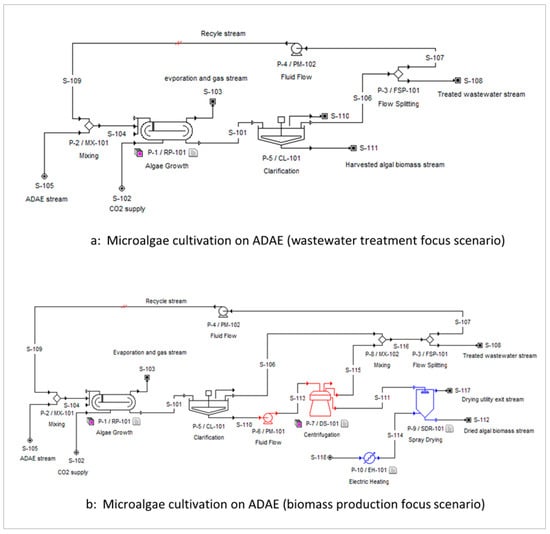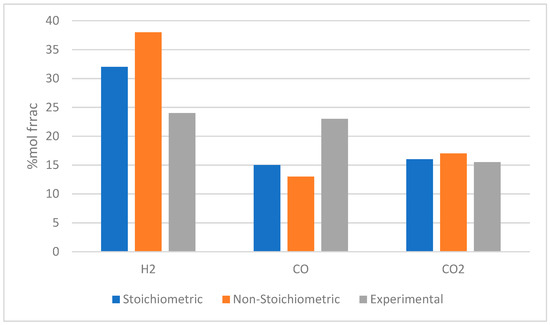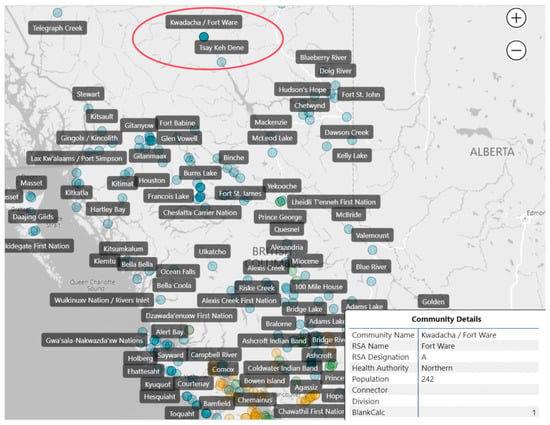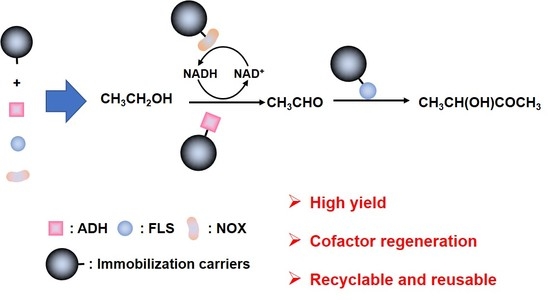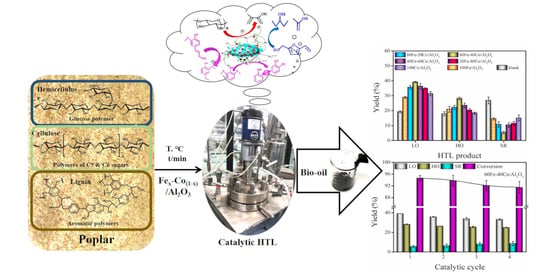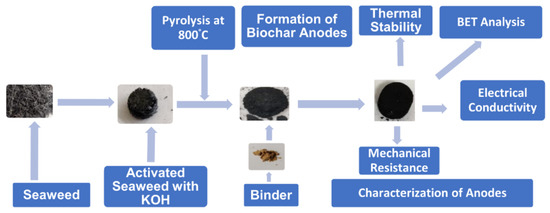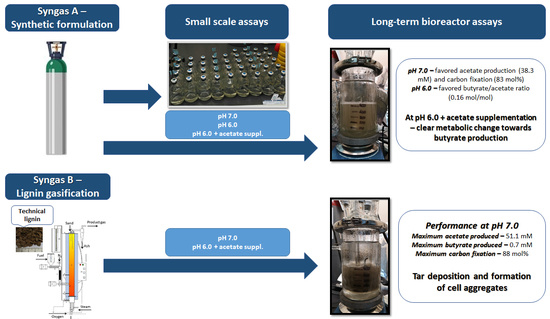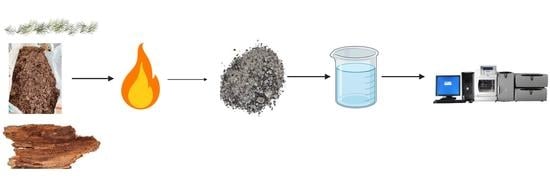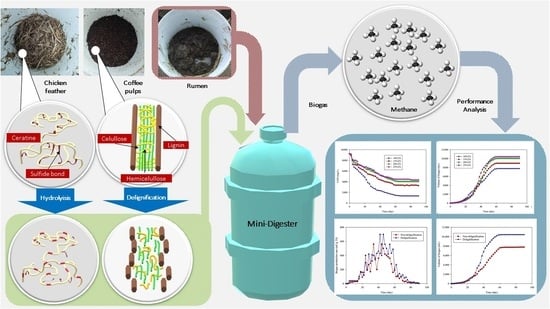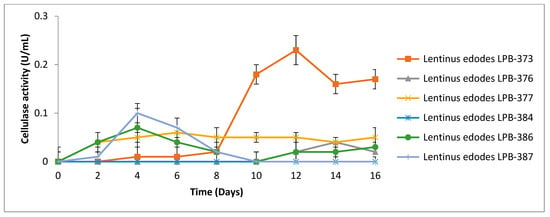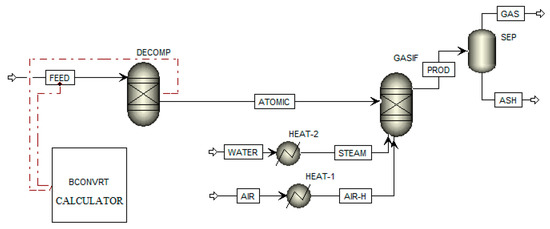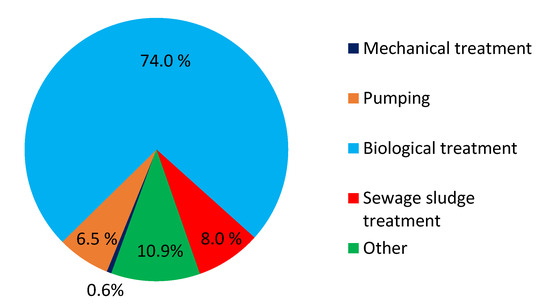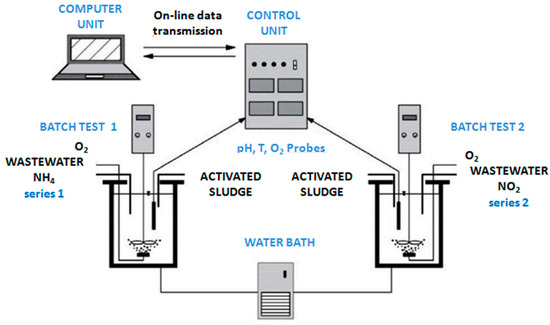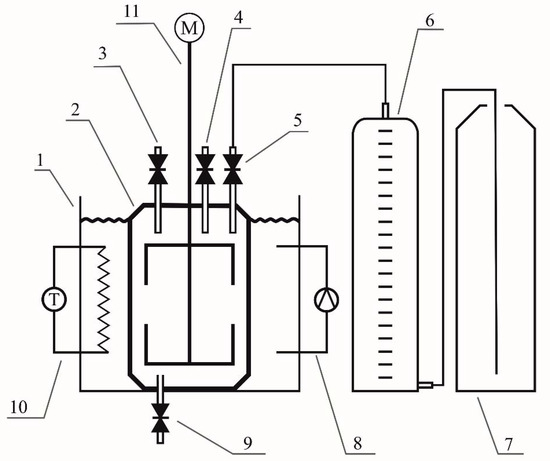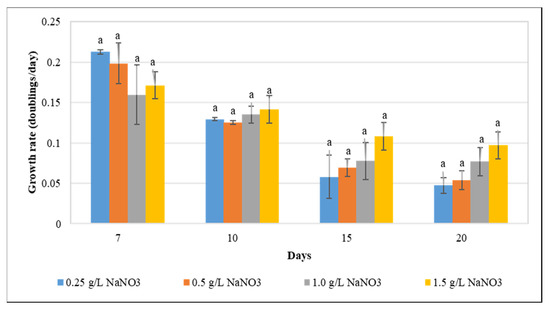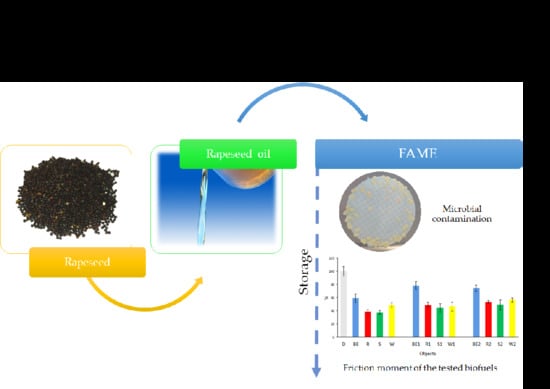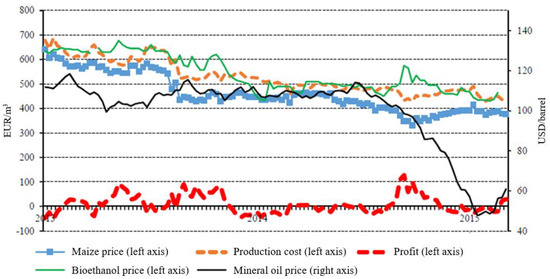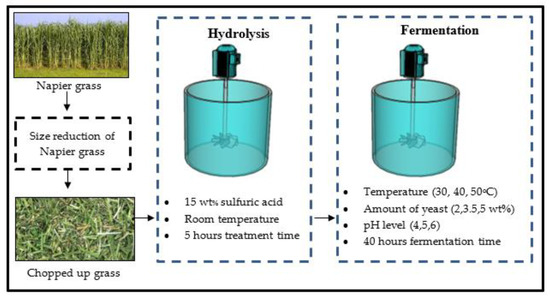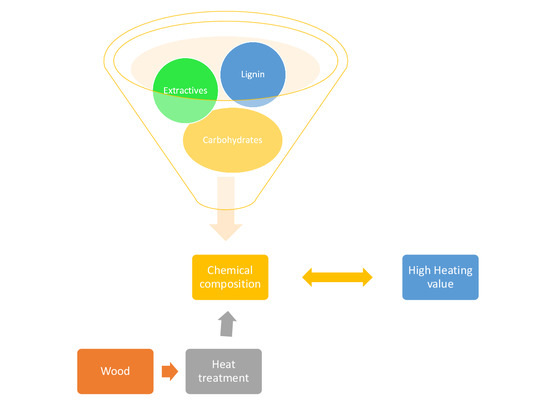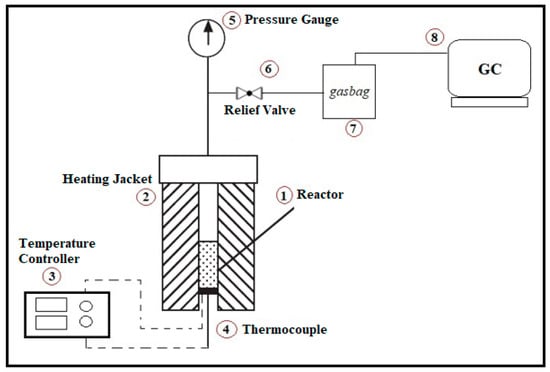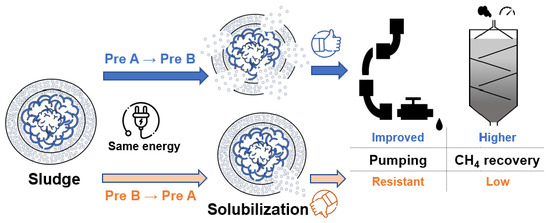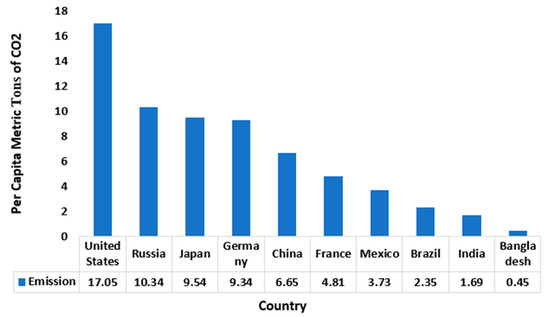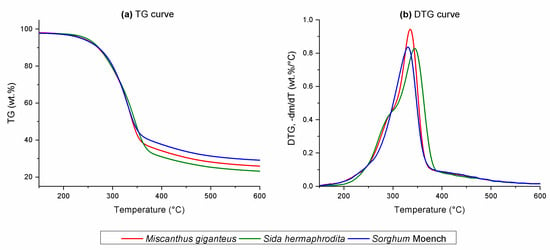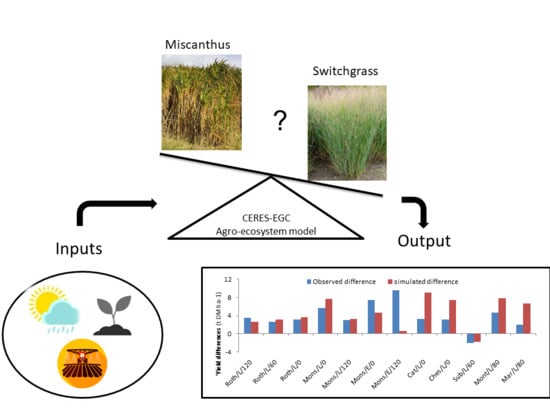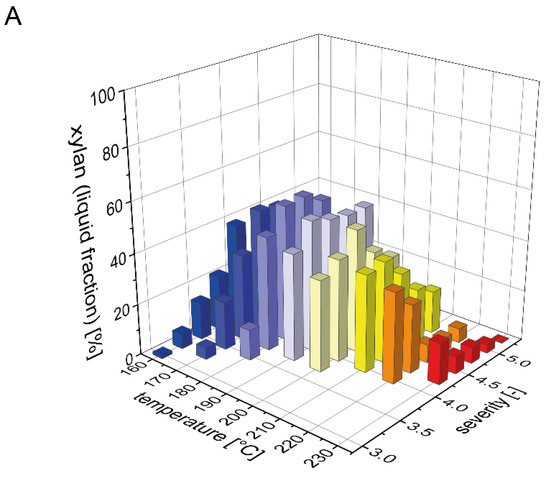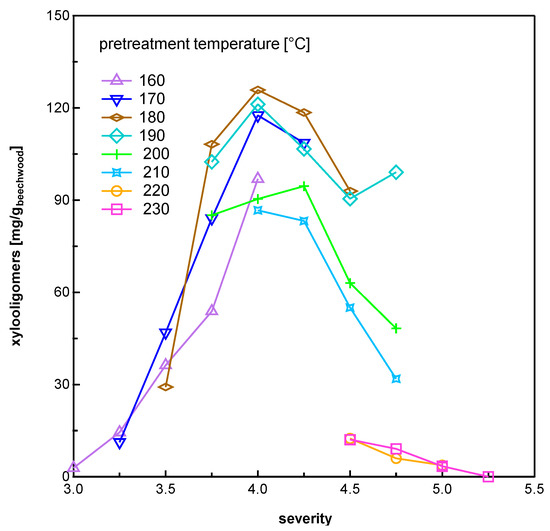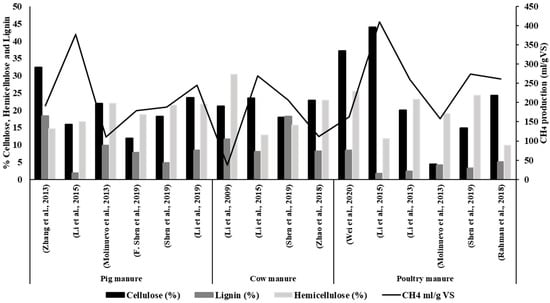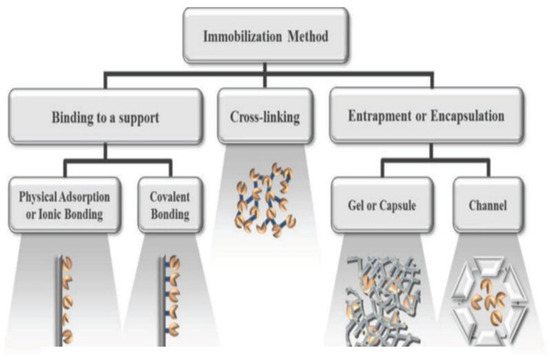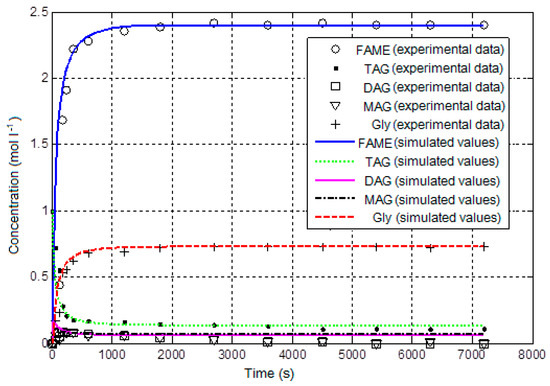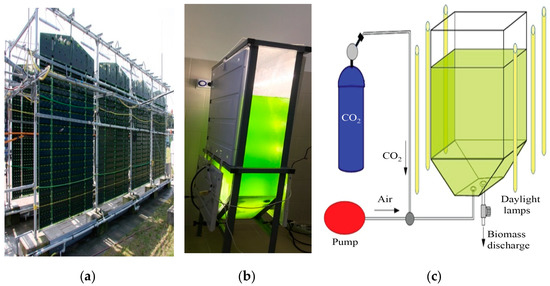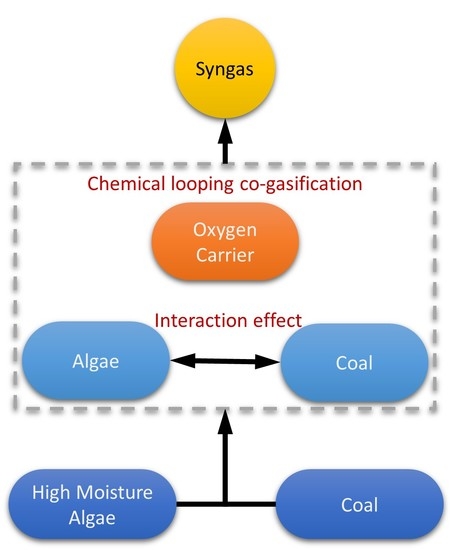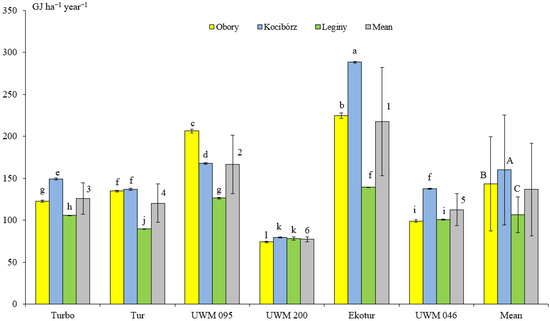Feature Papers in Bio-Energy
A topical collection in Energies (ISSN 1996-1073). This collection belongs to the section "A4: Bio-Energy".
Viewed by 105944
Share This Topical Collection
Editors
Topical Collection Information
Dear Colleagues,
This Special Issue of Energies is intended to present an ample variety of thematic areas in relation to all aspects of bio-energy production and use. Presently, there is an increasing concern of meeting energy demand while reducing dependency on fossil fuels. At the same time, a rapid global change to clean energy is urgently needed to prevent and mitigate the effects of climate change. These efforts are mostly directed towards replacing fossil fuels with renewable energy sources. This Special Issue has a wide scope and aims to collect high-quality research articles and review articles reflecting the latest progress in the research of bio-energy. In line with the scope of the Bio-Energy Section of Energies, topics in this Special Issue include but are not limited to biomass treatment, biofuels production by different conversion technologies, generation of heat and power from biofuels, and bio-energy and greenhouse gas emissions. We invite relevant experts in the above topics and colleagues to contribute feature papers reflecting the latest progress in their research field.
Prof. Fernando Rubiera González
Dr. Covadonga Pevida García
Guest Editor
Manuscript Submission Information
Manuscripts should be submitted online at www.mdpi.com by registering and logging in to this website. Once you are registered, click here to go to the submission form. Manuscripts can be submitted until the deadline. All submissions that pass pre-check are peer-reviewed. Accepted papers will be published continuously in the journal (as soon as accepted) and will be listed together on the collection website. Research articles, review articles as well as short communications are invited. For planned papers, a title and short abstract (about 100 words) can be sent to the Editorial Office for announcement on this website.
Submitted manuscripts should not have been published previously, nor be under consideration for publication elsewhere (except conference proceedings papers). All manuscripts are thoroughly refereed through a single-blind peer-review process. A guide for authors and other relevant information for submission of manuscripts is available on the Instructions for Authors page. Energies is an international peer-reviewed open access semimonthly journal published by MDPI.
Please visit the Instructions for Authors page before submitting a manuscript.
The Article Processing Charge (APC) for publication in this open access journal is 2600 CHF (Swiss Francs).
Submitted papers should be well formatted and use good English. Authors may use MDPI's
English editing service prior to publication or during author revisions.
Keywords
- lignocellulosic biomass
- microalgae
- refinery
- wastewater treatment
- pyrolysis
- gasification
- microwave treatment
- biochar
- catalysis
- beccs
- bioethanol
- biodiesel
- biohydrogen
- biofuel cells
- anaerobic digestion
Published Papers (38 papers)
Open AccessArticle
Feasibility of Nutrient Removal and Recovery from Abattoir Wastewater Using Microalgae
by
Sofia Chaudry, Arsalan Alavianghavanini, Pooya Darvehei, Navid R. Moheimani and Parisa A. Bahri
Viewed by 818
Abstract
The wastewater produced from the meat-processing industry is a rich source of nutrients which can be recovered using microalgae. This study assesses the potential of microalgae cultivation on abattoir wastewater based on its nutrient removal capacity from wastewater, biomass production and greenhouse gas
[...] Read more.
The wastewater produced from the meat-processing industry is a rich source of nutrients which can be recovered using microalgae. This study assesses the potential of microalgae cultivation on abattoir wastewater based on its nutrient removal capacity from wastewater, biomass production and greenhouse gas (GHG) emission savings potential. Designing the treatment ponds at the recycling rate of almost 80% of treated water results in high-quality water containing less than 1 mg/L nitrogen and 12 mg/L phosphorus. At the same time, the process can produce valuable algal biomass (≈2 kg/m
3 of abattoir wastewater) which can be further dewatered to make the process either economically self-sufficient or profit-making depending upon the use of algal biomass. It can finally avoid GHG emissions from 3.46 kg CO
2-eq to 6.11 kg CO
2-eq per m
3 of wastewater treated depending upon the credit of the product displaced by the algal biomass.
Full article
►▼
Show Figures
Open AccessFeature PaperReview
Modeling of Biomass Gasification: From Thermodynamics to Process Simulations
by
Vera Marcantonio, Luisa Di Paola, Marcello De Falco and Mauro Capocelli
Cited by 1 | Viewed by 1442
Abstract
Biomass gasification has obtained great interest over the last few decades as an effective and trustable technology to produce energy and fuels with net-zero carbon emissions. Moreover, using biomass waste as feedstock enables the recycling of organic wastes and contributing to circular economy
[...] Read more.
Biomass gasification has obtained great interest over the last few decades as an effective and trustable technology to produce energy and fuels with net-zero carbon emissions. Moreover, using biomass waste as feedstock enables the recycling of organic wastes and contributing to circular economy goals, thus reducing the environmental impacts of waste management. Even though many studies have already been carried out, this kind of process must still be investigated and optimized, with the final aim of developing industrial plants for different applications, from hydrogen production to net-negative emission strategies. Modeling and development of process simulations became an important tool to investigate the chemical and physical behavior of plants, allowing raw optimization of the process and defining heat and material balances of plants, as well as defining optimal geometrical parameters with cost- and time-effective approaches. The present review paper focuses on the main literature models developed until now to describe the biomass gasification process, and in particular on kinetic models, thermodynamic models, and computational fluid dynamic models. The aim of this study is to point out the strengths and the weakness of those models, comparing them and indicating in which situation it is better to use one approach instead of another. Moreover, theoretical shortcut models and software simulations not explicitly addressed by prior reviews are taken into account. For researchers and designers, this review provides a detailed methodology characterization as a guide to develop innovative studies or projects.
Full article
►▼
Show Figures
Open AccessFeature PaperArticle
Life Cycle Assessment of Bioenergy Production Using Wood Pellets: A Case Study of Remote Communities in Canada
by
Saghar Sadaghiani, Fereshteh Mafakheri and Zhi Chen
Cited by 3 | Viewed by 1288
Abstract
In remote communities of Canada, diesel is the primary source of electricity and heat. Promoting sustainable and diverse means of heat and power generation is essential to providing reliable and less carbon-intensive energy supply to remote communities. Among renewable energy sources in Canada,
[...] Read more.
In remote communities of Canada, diesel is the primary source of electricity and heat. Promoting sustainable and diverse means of heat and power generation is essential to providing reliable and less carbon-intensive energy supply to remote communities. Among renewable energy sources in Canada, biomass is a major source of energy, with wood pellets being a notable contributor. In this study, using wood pellets in a remote community of Canada is investigated using life cycle analysis (LCA). Furthermore, wood pellet combustion is compared with diesel combustion, the most common fossil fuel in these regions. SimaPro (version 8.4.0.0) was used with Ecoinvent 3 as the primary library because of the nature of the feedstock. Harvesting, transportation, sawmill operation, pelletization, and combustion stages are considered in LCA. In doing so, first, life cycle data related to each of these stages are collected with respect to eight impact categories of global warming, ozone depletion, carcinogenic, non-carcinogenic, smog, respiratory effects, acidification, eutrophication, ecotoxicity, and fossil fuel depletion. The results indicate that pelletization and combustion stages have the greatest environmental impact, specifically in terms of non-carcinogenic effects from pelletization and respiratory effects from pellet combustion. Additionally, when comparing wood pellets to diesel, wood pellet combustion exhibits superior performance across various impact categories, particularly in non-carcinogenic effects.
Full article
►▼
Show Figures
Open AccessArticle
Immobilization of Alcohol Dehydrogenase, Acetaldehyde Lyase, and NADH Oxidase for Cascade Enzymatic Conversion of Ethanol to Acetoin
by
Xue-Yong Li, Jia-Ying Huang, Qiang Zhou, Yuan-Yuan Xu, Ponnandy Prabhu and Ye-Wang Zhang
Cited by 3 | Viewed by 2138
Abstract
Acetoin, a four-carbon hydroxyl-keto compound, is used in the food, pharmaceutical, and chemical industries. The cascade enzymatic production is considered a promising and efficient method to produce acetoin. However, the stability and compatibility of the enzymes under the same catalytic conditions are challenges
[...] Read more.
Acetoin, a four-carbon hydroxyl-keto compound, is used in the food, pharmaceutical, and chemical industries. The cascade enzymatic production is considered a promising and efficient method to produce acetoin. However, the stability and compatibility of the enzymes under the same catalytic conditions are challenges that need to be resolved. In this work, alcohol dehydrogenase, acetaldehyde lyase, and NADH oxidase were selected to work at the same conditions to efficiently convert ethanol into acetoin. These three enzymes were immobilized on epoxy-modified magnetic nanomaterials to obtain highly stable biocatalysts. The stability and the immobilization conditions, including temperature, pH, enzyme–carrier ratio, and immobilization time, were optimized to obtain the immobilized enzymes with a high catalytic activity. The cascade reactions catalyzed by the immobilized enzymes yielded a high conversion of 90%, suggesting that the use of immobilized enzymes is a promising way to produce acetoin.
Full article
►▼
Show Figures
Open AccessArticle
Ethanol-Assisted Hydrothermal Liquefaction of Poplar Using Fe-Co/Al2O3 as Catalyst
by
Haijun Wu, Usama Shakeel, Quan Zhang, Kai Zhang, Xia Xu and Jian Xu
Cited by 3 | Viewed by 1629
Abstract
Although the conversion of lignocellulosic biomass into bio-oil with high yield/quality through hydrothermal liquefaction (HTL) is promising, it still faces many challenges. In this study, a Fe
x-Co
(1-x)/Al
2O
3 catalyst was prepared with the coprecipitation method and low-content
[...] Read more.
Although the conversion of lignocellulosic biomass into bio-oil with high yield/quality through hydrothermal liquefaction (HTL) is promising, it still faces many challenges. In this study, a Fe
x-Co
(1-x)/Al
2O
3 catalyst was prepared with the coprecipitation method and low-content ethanol was used as the cosolvent for the HTL of poplar. The results showed that the Fe
x-Co
(1-x)/Al
2O
3 catalyst significantly promoted the yield and energy recovery rate (ERR) of bio-oil compared with the control (10% ethanol content). At 260 °C for 30 min, 60Fe-40Co/Al
2O
3 had the best catalytic effect, achieving the highest bio-oil yield (67.35%) and ERR (93.07%). As a multifunctional bimetallic catalyst, Fe
x-Co
(1-x)/Al
2O
3 could not only increase the degree of hydrogenation deoxidization of the product but also promote the diversity of phenolic compounds gained from lignin. The bio-oil obtained from HTL with Fe
x-Co
(1-x)/Al
2O
3 as catalyst contained lower heterocyclic nitrogen, promoting the transfer of more bio-oil components to substances with lower boiling point.
Full article
►▼
Show Figures
Open AccessArticle
Fabrication and Characterization of Environmentally Friendly Biochar Anode
by
Ieva Kiminaitė, Aurimas Lisauskas, Nerijus Striūgas and Žilvinas Kryževičius
Cited by 4 | Viewed by 2956
Abstract
Electrical power generation by means of electrochemical systems utilizing wastewaters is a global energy challenge tackling technique for which a creation of novel eco-friendly electrode materials is in high relevance. For this purpose a Rhodophyta algae derived activated biochar anode bound with a
[...] Read more.
Electrical power generation by means of electrochemical systems utilizing wastewaters is a global energy challenge tackling technique for which a creation of novel eco-friendly electrode materials is in high relevance. For this purpose a Rhodophyta algae derived activated biochar anode bound with a flaxseeds mucilage binder (5, 10, 20, 30 wt.%) was formed and characterized by thermogravimetric, Brunauer-Emmett-Teller (BET) analysis as well as conductivity and mechanical resistance determination. Activation technique with KOH prior to carbonization at 800 °C of algae was employed to obtain biocarbon with a large surface area. The highest specific surface area of 1298.49 m
2/g was obtained with the binder-free sample and had a tendency to decrease with the increase of the binder content. It was estimated that biochar anodes are thermally stable at the temperature of up to 200 °C regardless of binder concentration. The concentration of the binder on the other hand had a significant influence in anodes mechanical resistance and electrical conductance: anode with 30 wt.% of the binder had the highest compressive strength equal to 104 bar; however, the highest conductivity was estimated in anode with 5 wt.% of the binder equal to 58 S/m. It is concluded that anode with 10 wt.% mucilage binder has the optimal properties necessary in MFC utilization.
Full article
►▼
Show Figures
Open AccessArticle
Lignin Syngas Bioconversion by Butyribacterium methylotrophicum: Advancing towards an Integrated Biorefinery
by
Marta Pacheco, Filomena Pinto, Joana Ortigueira, Carla Silva, Francisco Gírio and Patrícia Moura
Cited by 4 | Viewed by 1901
Abstract
Hybrid bio-thermochemical based technologies have the potential to ensure greater feedstock flexibility for the production of bioenergy and bioproducts. This study focused on the bioconversion of syngas produced from low grade technical lignin to C
2-/C
4-carboxylic acids by
Butyribacterium methylotrophicum
[...] Read more.
Hybrid bio-thermochemical based technologies have the potential to ensure greater feedstock flexibility for the production of bioenergy and bioproducts. This study focused on the bioconversion of syngas produced from low grade technical lignin to C
2-/C
4-carboxylic acids by
Butyribacterium methylotrophicum. The effects of pH, medium supplementation and the use of crude syngas were analyzed. At pH 6.0,
B. methylotrophicum consumed CO, CO
2 and H
2 simultaneously up to 87 mol% of carbon fixation, and the supplementation of the medium with acetate increased the production of butyrate by 6.3 times. In long-term bioreactor experiments,
B. methylotrophicum produced 38.3 and 51.1 mM acetic acid and 0.7 and 2.0 mM butyric acid from synthetic and lignin syngas, respectively. Carbon fixation reached 83 and 88 mol%, respectively. The lignin syngas conversion rate decreased from 13.3 to 0.9 NmL/h throughout the assay. The appearance of a grayish pellet and cell aggregates after approximately 220 h was indicative of tar deposition. Nevertheless, the stressed cells remained metabolically active and maintained acetate and butyrate production from lignin syngas. The challenge that impurities represent in the bioconversion of crude syngas has a direct impact on syngas cleaning requirements and operation costs, supporting the pursuit for more robust and versatile acetogens.
Full article
►▼
Show Figures
Open AccessArticle
The Importance of Extraction Protocol on the Analysis of Novel Waste Sources of Lignocellulosic Biomass
by
Daniel T. Hickey, Daniel J. Hayes, J. Tony Pembroke, Michael P. Ryan and James J. Leahy
Cited by 4 | Viewed by 2132
Abstract
As the utilization and consumption of lignocellulosic biomass increases, so too will the need for an adequate supply of feedstock. To meet these needs, novel waste feedstock materials will need to be utilized. Exploitation of these novel feedstocks will require information both on
[...] Read more.
As the utilization and consumption of lignocellulosic biomass increases, so too will the need for an adequate supply of feedstock. To meet these needs, novel waste feedstock materials will need to be utilized. Exploitation of these novel feedstocks will require information both on the effects of solvent extraction on the succeeding analysis of potential novel feedstocks and how accurate current methodologies are in determining the composition of novel lignocellulosic feedstocks, particularly the carbohydrate and lignin fractions. In this study, the effects of solvent extraction on novel feedstocks, including tree foliage, tree bark and spent mushroom compost, with 95% ethanol, water and both sequentially were examined. Chemical analyses were carried out to determine the moisture content, ash, extractives, post-hydrolysis sugars, Klason lignin (KL) and acid-soluble lignin (ASL) within the selected feedstocks. The result of extraction could be seen most strongly for Klason lignin, with a strong association between higher levels of Klason lignin levels and greater amounts of non-removed extractives (tree foliage and bark). Higher Klason lignin levels are reported to be due the condensation of non-removed extractives during hydrolysis, hence the lower Klason lignin determinations following extraction are more exact. In addition, total sugar determinations were lower following extractions. This is because of the solubility of non-cell-wall carbohydrates; thus, the determinations following extraction are more accurate representations of structural cell-wall polysaccharides such as cellulose. Such determinations will assist in determining the best way to utilize novel feedstocks such as those analyzed in this work.
Full article
►▼
Show Figures
Open AccessArticle
Biogas Production from Coffee Pulp and Chicken Feathers Using Liquid- and Solid-State Anaerobic Digestions
by
Siswo Sumardiono, Bakti Jos, Agata Advensia Eksa Dewanti, Isa Mahendra and Heri Cahyono
Cited by 6 | Viewed by 2928
Abstract
Agricultural waste, particularly lignocellulose, has been used in the second generation of biogas. Coffee pulp and chicken feathers can be developed as biogas raw materials because of their suitability as a biogas substrate. This study investigates the effect of the percentage of total
[...] Read more.
Agricultural waste, particularly lignocellulose, has been used in the second generation of biogas. Coffee pulp and chicken feathers can be developed as biogas raw materials because of their suitability as a biogas substrate. This study investigates the effect of the percentage of total solids (TS), carbon to nitrogen ratio (C/N, g/g), and delignification pretreatment on biogas production from coffee pulp and chicken feathers, and aims to compose kinetics using the modified Gompertz model. The results show that adjusting the percentage of TS at low-level speeds up the degradation process, which increases chemical oxygen demand (COD) reduction and biogas production. COD reduction and biogas production increase optimally at the 25 (g/g) C/N ratio. Pretreatment delignification aids microorganisms in substrate decomposition, resulting in faster COD reduction and biogas conversion. The 25% TS and 25 (g/g) C/N ratio with the delignification process achieved the best biogas production, with biogas production of 10,438.04 mL. The Gompertz method shows that the difference in TS percentage can influence biogas production. Moreover, the method shows that biogas production is higher with the delignification process than without it.
Full article
►▼
Show Figures
Open AccessArticle
Screening of Fungal Strains for Cellulolytic and Xylanolytic Activities Production and Evaluation of Brewers’ Spent Grain as Substrate for Enzyme Production by Selected Fungi
by
Rossana Liguori, Anna Pennacchio, Luciana Porto de Souza Vandenberghe, Addolorata De Chiaro, Leila Birolo, Carlos Ricardo Soccol and Vincenza Faraco
Cited by 4 | Viewed by 2223
Abstract
Brewer’s spent grain (BSG), the solid residue of beer production, is attracting significant attention as raw material for the production of added value substances, since until recently it was mainly used as animal feed or deposited in landfills, causing serious environmental problems. Therefore,
[...] Read more.
Brewer’s spent grain (BSG), the solid residue of beer production, is attracting significant attention as raw material for the production of added value substances, since until recently it was mainly used as animal feed or deposited in landfills, causing serious environmental problems. Therefore, this work aimed at developing a bioprocess using BSG as a substrate for the production of cellulases and xylanases for waste saccharification and bioenergy production. Different fungi were analyzed for their cellulolytic and xylanolytic abilities, through a first screening on solid media by assessment of fungal growth and enzyme production on agar containing carboxylmethylcellulose or xylan as the sole carbon source, respectively. The best cellulase and xylanase producers were subjected to quantitative evaluation of enzyme production in liquid cultures.
Aspergillus niger LPB-334 was selected for its ability to produce cellulase and xylanase at high levels and it was cultivated on BSG by solid state fermentation. The cellulase production reached a maximum of 118.04 ± 8.4 U/g of dry substrate after 10 days of fermentation, while a maximum xylanase production of 1315.15 ± 37.5 U/g of dry substrate was reached after 4 days. Preliminary characterization of cellulase and xylanase activities and identification of the enzymes responsible were carried out.
Full article
►▼
Show Figures
Open AccessArticle
Economic, Environmental and Energetic Analysis of a Distributed Generation System Composed by Waste Gasification and Photovoltaic Panels
by
Alvaro Quiles Garcia, Naoya Nishiumi, Atsushi Saito, Eriko Matsumura and Jiro Senda
Cited by 4 | Viewed by 1721
Abstract
Fossil fuel dependency in developed countries is worrisome due to the lack of energy security that traditional energy generation provides. In order to prevent future energy problems and to maintain a sustainable society, some countries are starting to develop renewable energy sources. In
[...] Read more.
Fossil fuel dependency in developed countries is worrisome due to the lack of energy security that traditional energy generation provides. In order to prevent future energy problems and to maintain a sustainable society, some countries are starting to develop renewable energy sources. In this research, biomass energy is introduced as a solution not only to reduce fossil fuel dependency, but also to improve municipal solid waste management. The purpose of this report is to construct a distributed power generation system combining the superheated steam gasification of solid waste and photovoltaic panels, and to verify the feasibility of generating power at the consumption site. It also focuses on optimizing the current waste superheated steam gasification system and compares the superheated steam gasification technology with other waste to energy technologies, such as downdraft air gasification and solid waste direct combustion. Finally, the report analyzes the economic, environmental and energetic viability of the above mentioned distributed generation system, which is located in a medium size mall surrounded by a community of 20,000 inhabitants. As a result, it was found that a distributed generation system composed by waste superheated steam gasification and photovoltaic panels is perfectly feasible, since its long term economic performance shows high profitability.
Full article
►▼
Show Figures
Open AccessArticle
Fast Pyrolysis of Cellulose by Infrared Heating
by
Takashi Nomura, Hinano Mizuno, Eiji Minami and Haruo Kawamoto
Cited by 5 | Viewed by 2122
Abstract
The fast pyrolysis of cellulose produces levoglucosan (LG), but secondary pyrolysis reactions tend to reduce the yield. The present study assessed the fast pyrolysis of cellulose by infrared (IR) heating under nitrogen flow. Because the nitrogen was not efficiently heated, gaseous LG was
[...] Read more.
The fast pyrolysis of cellulose produces levoglucosan (LG), but secondary pyrolysis reactions tend to reduce the yield. The present study assessed the fast pyrolysis of cellulose by infrared (IR) heating under nitrogen flow. Because the nitrogen was not efficiently heated, gaseous LG was immediately cooled, resulting in a maximum yield of 52.7% under optimized conditions. Slow nitrogen flow and a high IR power level provided a greater gas yield by raising the temperature of the cellulose, and the formation of CO could be used as an indicator of the gasification of LG. Glycolaldehyde (GA) was the major byproduct, and the GA yield remained relatively constant under all conditions. Accordingly, GA was not a secondary product from the LG but was likely produced from the reducing ends of cellulose and other intermediate carbohydrates. The pyrolysis of cellulose proceeded within a narrow region of carbonized material that absorbed IR radiation more efficiently. The bulk of each cellulose sample could be decomposed in spite of this heterogeneous process by maintaining fast pyrolysis conditions for a sufficient length of time. This technique is a superior approach to LG production compared with other fast pyrolysis methods based on heat conduction.
Full article
►▼
Show Figures
Open AccessArticle
Thermodynamic Analysis of Biomass Gasification Using Aspen Plus: Comparison of Stoichiometric and Non-Stoichiometric Models
by
María Pilar González-Vázquez, Fernando Rubiera, Covadonga Pevida, Daniel T. Pio and Luís A.C. Tarelho
Cited by 32 | Viewed by 6660
Abstract
The gasification process involves several reactions that occur simultaneously and are interrelated by several independent variables. Simulation tools can help us to understand the process behaviour and predict the efficiency and final composition of the products. In this work, two thermodynamic equilibrium models
[...] Read more.
The gasification process involves several reactions that occur simultaneously and are interrelated by several independent variables. Simulation tools can help us to understand the process behaviour and predict the efficiency and final composition of the products. In this work, two thermodynamic equilibrium models developed in Aspen Plus
® software were assessed: a non-stoichiometric model based on the feedstock composition and on the most probable compounds expected from the results of the gasification process using minimisation of Gibbs free energy and a stoichiometric model based on a set of chemical reactions considered as the most relevant to describe the gasification process. Both models were validated with experimental data from a bubbling fluidised bed semi-pilot scale gasifier using pine kernel shells (PKS) as feedstock. The influence of temperature, stoichiometric ratio (SR) and steam to biomass ratio (SBR) were analysed. Overall, predictions of the gas composition and gasification efficiency parameters by the stoichiometric model showed better agreement to the experimental results. Our results point out the significance of an accurate description of the equilibrium composition of producer gas with the stoichiometric model for the gasification of biomass.
Full article
►▼
Show Figures
Open AccessArticle
The Enhancement of Energy Efficiency in a Wastewater Treatment Plant through Sustainable Biogas Use: Case Study from Poland
by
Adam Masłoń, Joanna Czarnota, Aleksandra Szaja, Joanna Szulżyk-Cieplak and Grzegorz Łagód
Cited by 35 | Viewed by 4015
Abstract
The improvement of energy efficiency ensuring high nutrients removal is a great concern for many wastewater treatment plants (WWTPs). The energy balance of a WWTP can be improved through the application of highly efficient digestion or its intensification, e.g., through the introduction of
[...] Read more.
The improvement of energy efficiency ensuring high nutrients removal is a great concern for many wastewater treatment plants (WWTPs). The energy balance of a WWTP can be improved through the application of highly efficient digestion or its intensification, e.g., through the introduction of the co-substrates with relatively high energy potential to the sewage sludge (SS). In the present study, the overview of the energetic aspect of the Polish WWTPs was presented. The evaluation of energy consumption at individual stages of wastewater treatment along with the possibilities of its increasing was performed. Additionally, the influence of co-digestion process implementation on the energy efficiency of a selected WWTP in Poland was investigated. The evaluation was carried out for a WWTP located in Iława. Both energetic and treatment efficiency were analyzed. The energy balance evaluation of this WWTP was also performed. The obtained results indicated that the WWTP in Iława produced on average 2.54 GWh per year (7.63 GWh of electricity in total) as a result of the co-digestion of sewage sludge with poultry processing waste. A single cubic meter of co-substrates fed to the digesters yielded an average of 25.6 ± 4.3 Nm
3 of biogas (between 18.3 and 32.2 Nm
3/m
3). This enabled covering the energy demand of the plant to a very high degree, ranging from 93.0% to 99.8% (98.2% on average). Importantly, in the presence of the co-substrate, the removal efficiency of organic compounds was enhanced from 64% (mono-digestion) to 69–70%.
Full article
►▼
Show Figures
Open AccessArticle
Sustainable Production of Monoraphidium Microalgae Biomass as a Source of Bioenergy
by
Małgorzata Hawrot-Paw, Adam Koniuszy and Małgorzata Gałczyńska
Cited by 13 | Viewed by 2466
Abstract
Microalgae are a renewable source of unconventional biomass with potential application in the production of various biofuels. The production of carbon-neutral fuels is necessary for protecting the environment. This work determined the possibility of producing biomass of microalgae belonging to
Monoraphidium genus using
[...] Read more.
Microalgae are a renewable source of unconventional biomass with potential application in the production of various biofuels. The production of carbon-neutral fuels is necessary for protecting the environment. This work determined the possibility of producing biomass of microalgae belonging to
Monoraphidium genus using saline wastewater resulting from proecological salmon farming in the recirculating aquaculture system. The tests were carried out in tubular photobioreactors using LED light. As a part of the analyses, the growth and productivity of microalgal biomass, cell density in culture, and lipid concentration and ash content in biomass were determined. In addition, the concentration of selected phosphorus and nitrogen forms present in wastewater corresponding to the degree of their use by microalgae as a nutrient substrate was determined. The biomass concentration estimated in the tests was 3.79 g·L
−1, while the maximum biomass productivity was 0.46 g·L
−1·d
−1. The cells’ optical density in culture measured at 680 nm was 0.648. The lipid content in biomass was 18.53% (dry basis), and the ash content was 32.34%. It was found that microalgae of the genus
Monoraphidium effectively used the nitrogen as well as phosphorus forms present in the wastewater for their growth. The total nitrogen content in the sewage decreased by 82.62%, and total phosphorus content by over 99%. The analysis of the individual forms of nitrogen showed that N-NO
3 was reduced by 85.37% and N-NO
2 by 78.43%, while orthophosphate (V) dissolved in water was reduced by 99%. However, the content of N-NH
4 in wastewater from the beginning till the end of the experiment remained <0.05 mg·L
−1.
Full article
►▼
Show Figures
Open AccessArticle
Mutual Interaction between Temperature and DO Set Point on AOB and NOB Activity during Shortcut Nitrification in a Sequencing Batch Reactor in Terms of Energy Consumption Optimization
by
Mehdi Sharif Shourjeh, Przemysław Kowal, Jakub Drewnowski, Bartosz Szeląg, Aleksandra Szaja and Grzegorz Łagód
Cited by 15 | Viewed by 2712
Abstract
Recently, many wastewater treatment plants (WWTPs) have had to deal with serious problems related to the restrictive requirements regarding the effluent quality, as well as significant energy consumption associated with it. In this situation, mainstream deammonification and/or shortened nitrification-denitrification via nitrite (so-called “nitrite
[...] Read more.
Recently, many wastewater treatment plants (WWTPs) have had to deal with serious problems related to the restrictive requirements regarding the effluent quality, as well as significant energy consumption associated with it. In this situation, mainstream deammonification and/or shortened nitrification-denitrification via nitrite (so-called “nitrite shunt”) is a new promising strategy. This study shows the mechanisms and operating conditions (e.g., dissolved oxygen (DO) concentration, temp.), leading to the complete domination of ammonium oxidizing bacteria (AOB) over nitrite oxidizing bacteria (NOB) under aerobic conditions. Its successful application as shortcut nitrification in the sequencing batch reactor (SBR) technology will represent a paradigm shift for the wastewater industry, offering the opportunity for efficient wastewater treatment, energy-neutral or even energy-positive facilities, and substantial reductions in treatment costs. In this study, under low and moderate temperatures (10–16 °C), averaged DO concentrations (0.7 mg O
2/L) were preferable to ensure beneficial AOB activity over NOB, by maintaining reasonable energy consumption. Elevated temperatures (~30 °C), as well as increased DO concentration, were recognized as beneficial for the NOB activity stimulation, thus under such conditions, the DO limitation seems to be a more prospective approach.
Full article
►▼
Show Figures
Open AccessArticle
A Comparison of the Influence of Kraft Lignin and the Kraft Lignin/Silica System as Cell Carriers on the Stability and Efficiency of the Anaerobic Digestion Process
by
Agnieszka A. Pilarska, Agnieszka Wolna-Maruwka, Alicja Niewiadomska, Krzysztof Pilarski and Artur Olesienkiewicz
Cited by 6 | Viewed by 1896
Abstract
This study compares the effects of pure kraft lignin and the kraft lignin/silica system (1:4 by weight). The comparative analysis of the physicochemical properties of both carriers showed that the kraft lignin/silica system was characterised by better properties. The experiment conducted in the
[...] Read more.
This study compares the effects of pure kraft lignin and the kraft lignin/silica system (1:4 by weight). The comparative analysis of the physicochemical properties of both carriers showed that the kraft lignin/silica system was characterised by better properties. The experiment conducted in the study involved continuous anaerobic digestion under mesophilic conditions. Three samples were degraded in the following order: (i) sewage sludge (SS), (ii) SS with the addition of kraft lignin, and (iii) SS with the addition of the kraft lignin/silica system. A quantitative analysis of the digestate samples was carried out by means of in situ fluorescence. It showed more intense proliferation of microorganisms in the SS + kraft lignin/silica variant than in the sample with pure kraft lignin. The highest amount of biogas was obtained in the SS + kraft lignin/silica variant (689 m
3 Mg
−1 VS, including 413 m
3 Mg
−1 VS of methane; VS—volatile solids). There were comparable amounts of biogas in the SS variant (526 m
3 Mg
−1 VS of biogas, including 51% of methane) and the SS + kraft lignin variant (586 m
3 Mg
−1 VS of biogas, including 54% of methane). The research clearly showed that the material with a high share of silica was an effective cell carrier.
Full article
►▼
Show Figures
Open AccessArticle
Nitrogen Deprivation in Fremyella diplosiphon Augments Lipid Production without Affecting Growth
by
Behnam Tabatabai, Afua Adusei, Alok Kumar Shrivastava, Prashant Kumar Singh and Viji Sitther
Cited by 4 | Viewed by 2138
Abstract
Metabolic products such as lipids and proteins produced in cyanobacteria represent an excellent source of biomass and do not compete with agricultural land use unlike soybean and corn. Given their potential use as novel materials for biodiesel production, we aimed to explore the
[...] Read more.
Metabolic products such as lipids and proteins produced in cyanobacteria represent an excellent source of biomass and do not compete with agricultural land use unlike soybean and corn. Given their potential use as novel materials for biodiesel production, we aimed to explore the effect of cultivation period and nitrogen concentration on the growth rate and lipid content of
Fremyella diplosiphon, a model cyanobacterium. In this study,
F. diplosiphon grown in BG11/HEPES medium supplemented with 1.5 g L
−1 sodium nitrate (NaNO
3) for 7, 10, 15, and 20 days were compared to the untreated control in media amended with 0.25, 0.5, and 1.0 g L
−1 NaNO
3. Cultures were inoculated in liquid media and grown under continuous fluorescent light in an orbital incubator shaker, and extracted lipids subjected to gravimetric analysis and gas chromatography-mass spectroscopy to determine the best culture conditions for lipid production. Our results demonstrated that a reduction in nitrogen concentration had no significant effect on the growth rate across all cultivation periods; however, the accumulation of total lipid content was significantly influenced by nitrogen concentration. A maximum lipid production (40%) with no reduction in growth was observed in 10-day old cultures in a BG11/HEPES medium supplemented with 1.0 g L
−1 NaNO
3. Fatty acid methyl ester composition of transesterified lipids demonstrated high amounts of methyl palmitate (50–70%) followed by methyl octadecenoate (17–30%) in the accumulated lipids at all treatments. Trace quantities of methyl dodecanoate, methyl hexadecanoate, methyl octadecanoate, and methyl octadecadienoate (1–8%) were also observed in all tested samples, indicating that nitrogen deprivation in culture media increases lipid production without affecting growth.
Full article
►▼
Show Figures
Open AccessArticle
Functional Properties and Microbiological Stability of Fatty Acid Methyl Esters (FAME) under Different Storage Conditions
by
Małgorzata Hawrot-Paw, Adam Koniuszy, Paweł Sędłak and Daria Seń
Cited by 5 | Viewed by 1536
Abstract
Biofuels used as biocomponents for transport fuels should meet quality requirements. Their properties have a significant impact on the proper functioning of the engine supply system and the wear of its components. Changes in the performance of biofuel functionality may already occur during
[...] Read more.
Biofuels used as biocomponents for transport fuels should meet quality requirements. Their properties have a significant impact on the proper functioning of the engine supply system and the wear of its components. Changes in the performance of biofuel functionality may already occur during storage. Therefore, the present study aimed to evaluate changes in selected rheological and tribological parameters of higher fatty acid esters depending on the time and method of their storage by considering different types of substrates used for their production. The presence of possible microbiological contamination, which may affect the examined parameters of biofuels, was also analyzed. The dynamic viscosity of the biofuels tested changed depending on the substrate used. The biofuel produced from waste oil had the highest viscosity. Tribological studies show that both the linear wear of samples and the friction moment were higher after the storage period. The acid number of the esters did not exceed the permissible value recommended by the standard. The type of raw material used for the production of biodiesel and the conditions of its storage affected biodeterioration, proved by the growth of microorganisms. The highest number of microorganisms was recorded in biofuels prepared from waste oil.
Full article
►▼
Show Figures
Open AccessArticle
The Major Driving Forces of the EU and US Ethanol Markets with Special Attention Paid to the COVID-19 Pandemic
by
Tamás Mizik, Lajos Nagy, Zoltán Gabnai and Attila Bai
Cited by 8 | Viewed by 2768
Abstract
Ethanol is a widely produced fuel, as well as a fuel additive. Its price is closely related to the price of gasoline, its major substitute. This paper focuses on the impacts of the related variables on regional ethanol prices. Additionally, the length of
[...] Read more.
Ethanol is a widely produced fuel, as well as a fuel additive. Its price is closely related to the price of gasoline, its major substitute. This paper focuses on the impacts of the related variables on regional ethanol prices. Additionally, the length of the price dataset made it possible to isolate the impacts of COVID-19 on the ethanol prices. Using multiple regression and Confirmatory Factor Analyses, we found no significant correlation between the European and US ethanol prices because the major influencing factors were regionally different. In the case of the European ethanol markets, the positive factors were wheat, maize, and potassium chloride prices, while the European sugar and diammonium phosphate prices were negative. In the US markets, gasoline, sugar, and most of the artificial fertilizer prices were positive, while wheat prices were negative. Based on factor analysis, artificial fertilizers and maize factors proved to be important to the European markets, while US ethanol prices were driven by the crude oil-gasoline and raw materials factors. The COVID variable showed no significant connection with the EU prices, but negatively affected the US ethanol prices. This is explained by the different market characteristics, as the US is not only the major consumer, but also the major producer of the different oil products. Therefore, COVID-19 had a double effect on their oil and ethanol markets.
Full article
►▼
Show Figures
Open AccessArticle
Simulation of Mixing Intensity Profile for Bioethanol Production via Two-Step Fermentation in an Unbaffled Agitator Reactor
by
Snunkhaem Echaroj, Hwai Chyuan Ong and Xiuhan Chen
Cited by 4 | Viewed by 2528
Abstract
Bioethanol synthesis techniques have been studied intensively due to the energy crisis and various environmental concerns. A two-step bioethanol production process was carried out multiple times in an unbaffled agitator tank. The parameters varied, including the fermentation temperature, the pH level, the amount
[...] Read more.
Bioethanol synthesis techniques have been studied intensively due to the energy crisis and various environmental concerns. A two-step bioethanol production process was carried out multiple times in an unbaffled agitator tank. The parameters varied, including the fermentation temperature, the pH level, the amount of yeast, and the impeller type. Then, a simulation was used to obtain an image of the agitation behavior inside the agitator tank to compare the velocity profile of each type of impeller design. The impeller with eight blades was found to produce the highest flow velocity: 0.28 m/s. The highest concentration of bioethanol generated from the fermentation was 34 g/L, which was produced by using an eight-blade impeller at 30 °C, a pH level of 5, an agitation speed of 70 rpm, and 2 wt % yeast. The two-blade impeller produced the lowest bioethanol concentration, 18 g/L, under the same conditions. Ethanol concentration was found to peak at 40 °C and a pH level of 5. The geometry of the impeller, the fermentation temperature, and the pH level were each found to have a significant effect on the resulting bioethanol concentration according to the results of an ANOVA test. The amount of yeast had no effect on the fermentation reaction. Finally, the results demonstrated the possibility of using computational fluid dynamic modeling to determine the impeller’s behavior for the development of the bioethanol fermentation process. The simulation and experimental results from this research support the scaling up of a bioethanol production facility.
Full article
►▼
Show Figures
Open AccessArticle
In Situ Sonification of Anaerobic Digestion: Extended Evaluation of Performance in a Temperate Climate
by
John Loughrin, Stacy Antle, Jason Simmons, Karamat Sistani and Nanh Lovanh
Cited by 1 | Viewed by 2908
Abstract
Increasing the efficiency of anaerobic digesters and improving sludge breakdown is vital to reducing the cost of biogas production and reducing the environmental consequences of sludge disposal. The performance of two unheated anaerobic digestion systems, one exposed to sound at <20 kHz by
[...] Read more.
Increasing the efficiency of anaerobic digesters and improving sludge breakdown is vital to reducing the cost of biogas production and reducing the environmental consequences of sludge disposal. The performance of two unheated anaerobic digestion systems, one exposed to sound at <20 kHz by waterproofed speakers and one acting as a control, were compared for over a year. The digester systems were both composed of primary (11.4 m
3) and secondary (3.8 m
3) anaerobic tanks, facultative tertiary (3.0 m
3) tanks and an aerobic holding tank from which effluent was mixed with feed and recirculated back to the system. Exposure of the gas saturated digestate to a low frequency sine wave induced numerous bubble harmonics up to, and presumably beyond, ultrasonic range, showing that sonification of a highly gaseous liquid might be used to accomplish low power ultrasonication of digestate at greater distances than is possible with conventional ultrasonic technology. Through the summer of 2019, the sound-treated system produced 27% more biogas than the control system, and 74 times more during the winter when biogas production by the control systems essentially ceased. Afterwards, the control system produced more biogas due to depletion of volatile solids in the sound-treated digester. Results show that sound can be used for faster digester startup and substitute for a share of heating requirements during cool months.
Full article
►▼
Show Figures
Open AccessFeature PaperArticle
Calorific Power Improvement of Wood by Heat Treatment and Its Relation to Chemical Composition
by
Idalina Domingos, Umit Ayata, José Ferreira, Luisa Cruz-Lopes, Ali Sen, Sirri Sahin and Bruno Esteves
Cited by 15 | Viewed by 2583
Abstract
Chemical composition influences the calorific power of wood, mainly due to the calorific power of structural compounds and extractives. Heat treatment changes the chemical composition of treated wood. This work studies the relationship between chemical composition and calorific power improvement by heat treatment.
[...] Read more.
Chemical composition influences the calorific power of wood, mainly due to the calorific power of structural compounds and extractives. Heat treatment changes the chemical composition of treated wood. This work studies the relationship between chemical composition and calorific power improvement by heat treatment. Samples were heat-treated by the ThermoWood process
® for 1 h and 2 h. High heating value (HHV) and chemical composition; lignin, cellulose, hemicelluloses and extractives in dichloromethane, ethanol, and water were determined. The HHV of untreated wood ranged between 18.54–19.92 MJ/kg and increased with heat treatment for all the tested species. A positive linear correlation was found between HHV and Klason lignin (R
2 = 0.60). A negative trend was observed for holocellulose, cellulose, and hemicelluloses content against HHV, but with low determination coefficients for linear regression. The best adjust for polysaccharides was found for hemicelluloses content. A positive correlation could be found for dichloromethane extractives (R
2 = 0.04). The same was obtained in relation to ethanol extractives with R
2 = 0.20. For water and total extractives, no clear positive or negative trends could be achieved. The results showed that the HHV of wood increased with heat treatment and that this increase was mainly due to the increase in lignin content.
Full article
►▼
Show Figures
Open AccessArticle
Catalytic Properties and Recycling of NiFe2O4 Catalyst for Hydrogen Production by Supercritical Water Gasification of Eucalyptus Wood Chips
by
Ane Caroline Pereira Borges, Jude Azubuike Onwudili, Heloysa Andrade, Carine Alves, Andrew Ingram, Silvio Vieira de Melo and Ednildo Torres
Cited by 18 | Viewed by 2346
Abstract
Nickel iron oxide (NiFe
2O
4) catalyst was prepared by the combustion reaction method and characterized by XRD, N
2 adsorption/desorption, thermogravimetric analysis (TG), and temperature programmed reduction (TPR). The catalyst presented a mixture of oxides, including the NiFe
2O
[...] Read more.
Nickel iron oxide (NiFe
2O
4) catalyst was prepared by the combustion reaction method and characterized by XRD, N
2 adsorption/desorption, thermogravimetric analysis (TG), and temperature programmed reduction (TPR). The catalyst presented a mixture of oxides, including the NiFe
2O
4 spinel and specific surface area of 32.4 m
2 g
−1. The effect of NiFe
2O
4 catalyst on the supercritical water gasification (SCWG) of eucalyptus wood chips was studied in a batch reactor at 450 and 500 °C without catalyst and with 1.0 g and 2.0 g of catalyst and 2.0 g of biomass for 60 min. In addition, the recyclability of the catalyst under the operating conditions was also tested using recovered and recalcined catalysts over three reaction cycles. The highest amount of H
2 was 25 mol% obtained at 450 °C, using 2 g of NiFe
2O
4 catalyst. The H
2 mol% was enhanced by 45% when compared to the non-catalytic test, showing the catalytic activity of NiFe
2O
4 catalyst in the WGS and the steam reforming reactions. After the third reaction cycle, the results of XRD demonstrated formation of coke which caused the deactivation of the NiFe
2O
4 and consequently, a 13.6% reduction in H
2 mol% and a 5.6% reduction in biomass conversion.
Full article
►▼
Show Figures
Open AccessArticle
Series of Combined Pretreatment Can Affect the Solubilization of Waste-Activated Sludge
by
Alsayed Mostafa, Min-Gyun Kim, Seongwon Im, Mo-Kwon Lee, Seoktae Kang and Dong-Hoon Kim
Cited by 9 | Viewed by 2516
Abstract
Various pretreatment methods have been combined and employed for maximizing the solubilization of waste-activated sludge (WAS). However, the question “by changing the series of applied combined pretreatments (CPs), can the solubilization efficiency of WAS be affected?” has never been addressed. In this study,
[...] Read more.
Various pretreatment methods have been combined and employed for maximizing the solubilization of waste-activated sludge (WAS). However, the question “by changing the series of applied combined pretreatments (CPs), can the solubilization efficiency of WAS be affected?” has never been addressed. In this study, firstly, thermal (T), alkaline (A), and ultrasonic (U) pretreatments were individually applied at broad strengths (T = 80–120 °C for 30 min, A = pH 9–12, and U = 5–60 min at 300 W). Then, pretreatment conditions that caused similar solubilization (13.0%) (120 °C, pH 11, and 30 min for T, A, and U, respectively), were adopted for CP with reverse sequences of T&A, U&A, and T&U. A similar disintegration degree was observed in U→A and A→U, while a meaningful difference was found in T&A and T&U: T→A (28.3%), A→T (42.9%), T→U (22.9%), and U→T (27.1%). The difference in pretreatment series also affected the characteristics of soluble matters, which was analyzed by excitation emission matrix and molecular weight distribution. Due to these differences, the highest methane yield of 68.8% (based on (chemical oxygen demand) COD
input) was achieved at A→T, compared to T→A (62.3%). Our results suggested a simple strategy for increasing solubilization, at the same expense of energy, which might be beneficial in the following treatment process, such as dewatering and transportation.
Full article
►▼
Show Figures
Open AccessReview
Advances of Carbon Capture and Storage in Coal-Based Power Generating Units in an Indian Context
by
Anoop Kumar Shukla, Zoheb Ahmad, Meeta Sharma, Gaurav Dwivedi, Tikendra Nath Verma, Siddharth Jain, Puneet Verma and Ali Zare
Cited by 20 | Viewed by 3443
Abstract
India is a nation with a diverse economy that requires tremendous resources to completely meet the desires of its compatriots in various sectors. In terms of energy resources and requirements, coal-based power plants can fulfill the bulk of these electricity needs. India is
[...] Read more.
India is a nation with a diverse economy that requires tremendous resources to completely meet the desires of its compatriots in various sectors. In terms of energy resources and requirements, coal-based power plants can fulfill the bulk of these electricity needs. India is very reliant on coal, which is used in power plants as a primary energy source. However, the usage of coal energy at a higher level continuously pollutes the atmosphere. The Indian power market alone accounts for half of the country’s CO
2 emissions, which implies that significant action is needed to contain environmental pollution. Carbon Capture and Storage (CCS) is a bridging technique and feasible alternative for the carbon fired plant processing of CO
2. However, the application of CCS in coal-fired power stations is still uncommon in the nation. At the UNFCCC Paris Summit, India committed to reduce its carbon emission intensity by approximately 30–33% by 2030. In this work, several CCS systems, possible CO
2 origins, and emission levels in India are discussed. Various advanced methods for CO
2 capture and separation are also highlighted. Furthermore, the current work discusses CCS situations and the applications of CCS in India along with its manifold challenges.
Full article
►▼
Show Figures
Open AccessArticle
Characterization of Chemically and Physically Activated Carbons from Lignocellulosic Ethanol Lignin-Rich Stream via Hydrothermal Carbonization and Slow Pyrolysis Pretreatment
by
Edoardo Miliotti, Luca Rosi, Lorenzo Bettucci, Giulia Lotti, Andrea Maria Rizzo and David Chiaramonti
Cited by 15 | Viewed by 3090
Abstract
The aim of the present work is to investigate the possibility of producing activated carbons from the residual lignin stream of lignocellulosic ethanol biorefineries, as this represents an optimal opportunity to exploit a residual and renewable material in the perspective of sustainable bioeconomy,
[...] Read more.
The aim of the present work is to investigate the possibility of producing activated carbons from the residual lignin stream of lignocellulosic ethanol biorefineries, as this represents an optimal opportunity to exploit a residual and renewable material in the perspective of sustainable bioeconomy, increasing biorefinery incomes by producing value-added bioproducts in conjunction with biofuels. Activated carbons (ACs) were produced via chemical (KOH) and physical (CO
2) activation. Char samples were obtained by slow pyrolysis (SP) and hydrothermal carbonization (HTC). Several HTC experiments were carried out by varying residence time (0.5–3 h) and reaction temperature (200–270 °C), in order to evaluate their influence on the product yield and on the morphological characteristics of the hydrochar (specific surface area, total pore volume and pore size distribution). ACs from hydrochars were compared with those obtained from pyrochar (via physical activation) and from the raw lignin-rich stream (via chemical activation). In both cases, by increasing the HTC temperature, the specific surface of the resulting activated carbons decreased from 630 to 77 m
2 g
−1 for physical activation and from 675 to 81 m
2 g
−1 for chemical activation, indicating that an increase in the severity of the hydrothermal pretreatment is deleterious for the activated carbons quality. In addition, the HTC aqueous samples were analyzed, with GC-MS and GC-FID. The results suggest that at low temperatures the reaction mechanisms are dominated by hydrolysis, instead when the temperature is increased to 270 °C, a more complex network of reactions takes place among which decarboxylation.
Full article
►▼
Show Figures
Open AccessArticle
Thermogravimetric Kinetics of Selected Energy Crops Pyrolysis
by
Magdalena Matusiak, Radosław Ślęzak and Stanisław Ledakowicz
Cited by 13 | Viewed by 2714
Abstract
The main purpose of this paper was to compare the pyrolysis kinetics of three types of energy crops:
Miscanthus giganteus, Sida hermaphrodita, and
Sorghum Moench. Studies were conducted in thermobalance. Feedstock samples were heated up from ambient temperature to 600 °C under an
[...] Read more.
The main purpose of this paper was to compare the pyrolysis kinetics of three types of energy crops:
Miscanthus giganteus, Sida hermaphrodita, and
Sorghum Moench. Studies were conducted in thermobalance. Feedstock samples were heated up from ambient temperature to 600 °C under an inert argon atmosphere. Three heating rates of
β = 5, 10, and 20 °C/min were applied. Reactions occurring in the given temperature ranges were grouped together into so-called lumps identified by the deconvolution of derivative thermogravimetry (DTG) curves that corresponded to biomass compositions (hemicellulose, cellulose, and lignin). For the estimation of the activation energy and pre-exponential factor, the Friedman and Ozawa–Flynn–Wall methods were used. The final kinetic parameters were determined by nonlinear regression assuming that thermal decomposition proceeded via three parallel independent reactions of the
nth order. The activation energy of hemicellulose, cellulose and lignin was determined to be in the range of 92.9–97.7, 190.1–192.5, and 170–175.2 kJ/mol, respectively. The reaction order was in the range of 3.35–3.99 for hemicellulose, 1.38–1.93 for cellulose, and 3.97–3.99 for lignin. The obtained results allow us to estimate the pyrolytic potential of energy crops selected for this study, and can be used in designing efficient pyrolizers for these materials.
Full article
►▼
Show Figures
Open AccessArticle
Using a Crop Model to Benchmark Miscanthus and Switchgrass
by
Monia El Akkari, Fabien Ferchaud, Loïc Strullu, Ian Shield, Aurélie Perrin, Jean Louis Drouet, Pierre Alain Jayet and Benoît Gabrielle
Cited by 6 | Viewed by 1917
Abstract
Crop yields are important items in the economic performance and the environmental impacts of second-generation biofuels. Since they strongly depend on crop management and pedoclimatic conditions, it is important to compare candidate feedstocks to select the most appropriate crops in a given context.
[...] Read more.
Crop yields are important items in the economic performance and the environmental impacts of second-generation biofuels. Since they strongly depend on crop management and pedoclimatic conditions, it is important to compare candidate feedstocks to select the most appropriate crops in a given context. Agro-ecosystem models offer a prime route to benchmark crops, but have been little tested from this perspective thus far. Here, we tested whether an agro-ecosystem model (CERES-EGC) was specific enough to capture the differences between miscanthus and switchgrass in northern Europe. The model was compared to field observations obtained in seven long-term trials in France and the UK, involving different fertilizer input rates and harvesting dates. At the calibration site (Estrées-Mons), the mean deviations between simulated and observed crop biomass yields for miscanthus varied between −0.3 t DM ha
−1 and 4.2 t DM ha
−1. For switchgrass, simulated yields were within 1.0 t DM ha
−1 of the experimental data. Observed miscanthus yields were higher than switchgrass yields in most sites and for all treatments, with one exception. Overall, the model captured the differences between both crops adequately, with a mean deviation of 0.46 t DM ha
−1, and could be used to guide feedstock selections over larger biomass supply areas.
Full article
►▼
Show Figures
Open AccessFeature PaperEditor’s ChoiceArticle
CFD Simulation and a Pragmatic Analysis of Performance and Emissions of Tomato Seed Biodiesel Blends in a 4-Cylinder Diesel Engine
by
Rahim Karami, Mohammad G. Rasul and Mohammad M. K. Khan
Cited by 10 | Viewed by 3445
Abstract
Rising global concerns about global warming caused by pollution from excessive fossil fuels consumption, along with the high price of them in diesel engines, are the important reasons to search for fuels which is readily available and do not have destructive effects on
[...] Read more.
Rising global concerns about global warming caused by pollution from excessive fossil fuels consumption, along with the high price of them in diesel engines, are the important reasons to search for fuels which is readily available and do not have destructive effects on the environment. Biodiesel is arguably the most appropriate and sustainable alternative to diesel fuel. Tomato seeds are one of the potential sources of biodiesel. They make up about 72% by weight of tomato waste, which contains an average of 24% oil. Tomato seed oil (TSO) can be used as a cheap and non-edible source of biodiesel. This paper investigated, both experimentally and numerically, the effects of different diesel–TSOB (tomato seed oil biodiesel) blends on the performance and emissions parameters of a four-cylinder, four-stroke, indirect injection diesel engine. The main goal of the paper was the simulation of the formation process of the emissions in the combustion chamber. The experimentally measured parameters such as torque, brake specific fuel consumption, exhaust gas temperature, nitrogen oxides, carbon monoxide, carbon dioxide, particulate matter, peak in-cylinder pressure, in-cylinder temperature and Reaction_Progress_Variable at different engine loads and speeds from 1200 to 2400 rpm at increments of 200 rpm are analyzed through ANOVA. The highest brake specific fuel consumption (BSFC) was observed for pure diesel and the lowest for the fuel blend with 10% biodiesel. The fuel blend with 20% biodiesel produced the highest torque. The engine was modeled using the AVL FIRE software. The model simulation results revealed that the highest nitrogen oxide (NOx) is produced in the throat of the combustion chamber to the top of the piston, the place of carbon dioxides (CO
2) formation is near the combustion chamber boundaries and the location of carbon monoxides (CO) formation is near the combustion chamber boundaries and at the center area of the top of the piston. These results also show that the particulate matter (PM) emissions are formed where the fuel is injected into the combustion chamber.
Full article
►▼
Show Figures
Open AccessArticle
Steam Explosion Pretreatment of Beechwood. Part 1: Comparison of the Enzymatic Hydrolysis of Washed Solids and Whole Pretreatment Slurry at Different Solid Loadings
by
Robert Balan, Andrzej Antczak, Simone Brethauer, Tomasz Zielenkiewicz and Michael H. Studer
Cited by 15 | Viewed by 2298
Abstract
Steam explosion is a well-known process to pretreat lignocellulosic biomass in order to enhance sugar yields in enzymatic hydrolysis, but pretreatment conditions have to be optimized individually for each material. In this study, we investigated how the results of a pretreatment optimization procedure
[...] Read more.
Steam explosion is a well-known process to pretreat lignocellulosic biomass in order to enhance sugar yields in enzymatic hydrolysis, but pretreatment conditions have to be optimized individually for each material. In this study, we investigated how the results of a pretreatment optimization procedure are influenced by the chosen reaction conditions in the enzymatic hydrolysis. Beechwood was pretreated by steam explosion and the resulting biomass was subjected to enzymatic hydrolysis at glucan loadings of 1% and 5% employing either washed solids or the whole pretreatment slurry. For enzymatic hydrolysis in both reaction modes at a glucan loading of 1%, the glucose yields markedly increased with increasing severity and with increasing pretreatment temperature at identical severities and maximal values were reached at a pretreatment temperature of 230 °C. However, the optimal severity was 5.0 for washed solids enzymatic hydrolysis, but only 4.75 for whole slurry enzymatic hydrolysis. When the glucan loading was increased to 5%, glucose yields hardly increased for pretreatment temperatures between 210 and 230 °C at a given severity, and a pretreatment temperature of 220 °C was sufficient under these conditions. Consequently, it is important to precisely choose the desired conditions of the enzymatic hydrolysis reaction, when aiming to optimize the pretreatment conditions for a certain biomass.
Full article
►▼
Show Figures
Open AccessArticle
Steam Explosion Pretreatment of Beechwood. Part 2: Quantification of Cellulase Inhibitors and Their Effect on Avicel Hydrolysis
by
Simone Brethauer, Andrzej Antczak, Robert Balan, Tomasz Zielenkiewicz and Michael H. Studer
Cited by 12 | Viewed by 2164
Abstract
Biomass pretreatment is a mandatory step for the biochemical conversion of lignocellulose to chemicals. During pretreatment, soluble compounds are released into the prehydrolyzate that inhibit the enzymatic hydrolysis step. In this work, we investigated how the reaction conditions in steam explosion pretreatment of
[...] Read more.
Biomass pretreatment is a mandatory step for the biochemical conversion of lignocellulose to chemicals. During pretreatment, soluble compounds are released into the prehydrolyzate that inhibit the enzymatic hydrolysis step. In this work, we investigated how the reaction conditions in steam explosion pretreatment of beechwood (severity: 3.0–5.25; temperature: 160–230 °C) influence the resulting amounts of different inhibitors. Furthermore, we quantified the extent of enzyme inhibition during enzymatic hydrolysis of Avicel in the presence of the prehydrolyzates. The amounts of phenolics, HMF, acetic acid and formic acid increased with increasing pretreatment severities and maximal quantities of 21.6, 8.3, 43.7 and 10.9 mg/g
beechwood, respectively, were measured at the highest severity. In contrast, the furfural concentration peaked at a temperature of 200 °C and a severity of 4.75. The presence of the prehydrolyzates in enzymatic hydrolysis of Avicel lowered the glucose yields by 5–26%. Mainly, the amount of phenolics and xylose and xylooligomers contributed to the reduced yield. As the maximal amounts of these two inhibitors can be found at different conditions, a wide range of pretreatment severities led to severely inhibiting prehydrolyzates. This study may provide guidelines when choosing optimal pretreatment conditions for whole slurry enzymatic hydrolysis.
Full article
►▼
Show Figures
Open AccessReview
Pretreatment of Animal Manure Biomass to Improve Biogas Production: A Review
by
Meneses-Quelal Orlando and Velázquez-Martí Borja
Cited by 51 | Viewed by 8339
Abstract
The objective of this research is to present a review of the current technologies and pretreatments used in the fermentation of cow, pig and poultry manure. Pretreatment techniques were classified into physical, chemical, physicochemical, and biological groups. Various aspects of these different pretreatment
[...] Read more.
The objective of this research is to present a review of the current technologies and pretreatments used in the fermentation of cow, pig and poultry manure. Pretreatment techniques were classified into physical, chemical, physicochemical, and biological groups. Various aspects of these different pretreatment approaches are discussed in this review. The advantages and disadvantages of its applicability are highlighted since the effects of pretreatments are complex and generally depend on the characteristics of the animal manure and the operational parameters. Biological pretreatments were shown to improve methane production from animal manure by 74%, chemical pretreatments by 45%, heat pretreatments by 41% and physical pretreatments by 30%. In general, pretreatments improve anaerobic digestion of the lignocellulosic content of animal manure and, therefore, increase methane yield.
Full article
►▼
Show Figures
Open AccessReview
A Review on Bio-Based Catalysts (Immobilized Enzymes) Used for Biodiesel Production
by
Samuel Santos, Jaime Puna and João Gomes
Cited by 60 | Viewed by 4598
Abstract
The continuous increase of the world’s population results in an increased demand for energy drastically from the industrial and domestic sectors as well. Moreover, the current public awareness regarding issues such as pollution and overuse of petroleum fuel has resulted in the development
[...] Read more.
The continuous increase of the world’s population results in an increased demand for energy drastically from the industrial and domestic sectors as well. Moreover, the current public awareness regarding issues such as pollution and overuse of petroleum fuel has resulted in the development of research approaches concerning alternative renewable energy sources. Amongst the various options for renewable energies used in transportation systems, biodiesel is considered the most suitable replacement for fossil-based diesel. In what concerns the industrial application for biodiesel production, homogeneous catalysts such as sodium hydroxide, potassium hydroxide, sulfuric acid, and hydrochloric acid are usually selected, but their removal after reaction could prove to be rather complex and sometimes polluting, resulting in increases on the production costs. Therefore, there is an open field for research on new catalysts regarding biodiesel production, which can comprise heterogeneous catalysts. Apart from that, there are other alternatives to these chemical catalysts. Enzymatic catalysts have also been used in biodiesel production by employing lipases as biocatalysts. For economic reasons, and reusability and recycling, the lipases urged to be immobilized on suitable supports, thus the concept of heterogeneous biocatalysis comes in existence. Just like other heterogeneous catalytic materials, this one also presents similar issues with inefficiency and mass-transfer limitations. A solution to overcome the said limitations can be to consider the use of nanostructures to support enzyme immobilization, thus obtaining new heterogeneous biocatalysts. This review mainly focuses on the application of enzymatic catalysts as well as nano(bio)catalysts in transesterification reaction and their multiple methods of synthesis.
Full article
►▼
Show Figures
Open AccessArticle
Universal Kinetic Model to Simulate Two-Step Biodiesel Production from Vegetable Oil
by
A. Alcantara, F. J. Lopez-Gimenez and M. P. Dorado
Cited by 1 | Viewed by 2446
Abstract
To date, to simulate biodiesel production, kinetic models from different authors have been provided, each one usually applied to the use of a specific vegetable oil and experimental conditions. Models, which may include esterification, besides transesterification simulation, were validated with their own experimental
[...] Read more.
To date, to simulate biodiesel production, kinetic models from different authors have been provided, each one usually applied to the use of a specific vegetable oil and experimental conditions. Models, which may include esterification, besides transesterification simulation, were validated with their own experimental conditions and raw material. Moreover, information about the intermediate reaction steps, besides catalyst concentration variation, is either rare or nonexistent. Here, in this work, a universal mathematical model comprising the chemical kinetics of a two-step (esterification and transesterification) vegetable oil-based biodiesel reaction is proposed. The proposed model is universal, as it may simulate any vegetable oil biodiesel reaction from the literature. For this purpose, a mathematical model using the software MATLAB has been designed. Using the mathematical model, the estimation of mass variation with time, of both reactants and products, as well as glyceride conversion and homogeneous catalyst concentration variation (instead of only alcohol/catalyst solution) are allowed. Moreover, analysis of the influence of some important variables affecting the reaction kinetics of biodiesel production (e.g., catalyst concentration), along with comparison and model validation with data from different authors may be carried out. In addition, Supplementary material with a collection of 290 rate constants, derived from 55 different experiments using different vegetable oils and conditions is provided.
Full article
►▼
Show Figures
Open AccessArticle
Development of Full-Cycle Utilization of Chlorella sorokiniana Microalgae Biomass for Environmental and Food Purposes
by
Natalia Politaeva, Yulia Smyatskaya, Rafat Al Afif, Christoph Pfeifer and Liliya Mukhametova
Cited by 15 | Viewed by 3660
Abstract
The application of microalgae biomass of
Chlorella sorokiniana as environmentally friendly biosorbents for removing potentially toxic elements (PTE) from water and as a source of biofuel has been thoroughly studied. In this paper, we investigate its physicochemical properties infrared spectroscopy (IR spectra), microstructure,
[...] Read more.
The application of microalgae biomass of
Chlorella sorokiniana as environmentally friendly biosorbents for removing potentially toxic elements (PTE) from water and as a source of biofuel has been thoroughly studied. In this paper, we investigate its physicochemical properties infrared spectroscopy (IR spectra), microstructure, adsorption properties); we have managed to isolate the lipid complex, which amounted to 20% of dry biomass. Studies of the lipid complex showed that 80.02% of lipids are unsaturated fatty acids (C18:1, C18:2, C18:3). Additionally, we have investigated the efficiency of using the residual biomass obtained after lipid extraction for water purification from rare-earth metals (REM) and PTE. To increase the sorption properties of residual biomass, its thermal modification was carried out and sorption materials based on heat-treated residual biomass and chitosan were created. The physicochemical and mechanical properties of the obtained sorption materials were studied. The total sorption capacity was 31.9 mg/g for REM and 349.7 mg/g for PTE. Moreover, we propose a new method for the disposal of spent sorbents as additional fuel. Spent sorbents can be considered to be biofuel in terms of energy content (20.7 MJ*kg
−1). The results of this study provide the basis for increased use of microalgae.
Full article
►▼
Show Figures
Open AccessArticle
Chemical Looping Co-Gasification Characteristics of Cyanobacterial/Coal Blends
by
Tianxu Shen, Jiang Zhang, Laihong Shen, Lei Bai and Jingchun Yan
Cited by 7 | Viewed by 2359
Abstract
The frequent outbreak of cyanobacteria bloom results in an urgent need for the resource utilization of cyanobacteria. However, the development of routine thermal treatment (i.e., gasification and pyrolysis) is hindered by the issue of high moisture content. In order to minimize the dewatering
[...] Read more.
The frequent outbreak of cyanobacteria bloom results in an urgent need for the resource utilization of cyanobacteria. However, the development of routine thermal treatment (i.e., gasification and pyrolysis) is hindered by the issue of high moisture content. In order to minimize the dewatering requirement, this study investigated the chemical looping co-gasification of the cyanobacteria/coal mixture. The results showed that the residual moisture of cyanobacteria not only could serve as the gasifying agent of coal, but also presented a better gasification effect than the injecting steam. Meanwhile, blending cyanobacteria also improved the performance of coal chemical looping gasification in terms of the syngas quality, gasification rate, and carbon conversion efficiency. Cyanobacteria pyrolysis supplied abundant hydrocarbons and hydrogen-rich gases. The highest syngas yield of 1.26 Nm
3/kg was obtained in the mixture fuel of 46 wt.% cyanobacteria and 54 wt.% coal under a 0.3 oxygen carrier-to-fuel ratio. A slight interaction effect was observed in the pyrolysis process, in which the reactivity of coal pyrolysis was enhanced by the oxygenated groups of cyanobacteria volatile. The dominant motive of the interaction effect was the catalytic effect of alkali metals of cyanobacteria ash on the coal gasification. However, the formation of aluminosilicates deactivated alkali metals and further inhibited the char gasification. The intensity of interaction effect was demonstrated to be highly relevant with the (Na + K)/Al molar ratio of ash. The most prominent interaction effect occurred for the sample with 82 wt.% cyanobacteria, but a negative interaction was observed in the sample with 10 wt.% cyanobacteria. Both homogeneous reaction and shrinking core models showed the excellent fitting performance in the char gasification process. However, these two models could not be applied to the initial pyrolysis process because of the intricate mechanisms.
Full article
►▼
Show Figures
Open AccessArticle
Energy Value of Yield and Biomass Quality in a 7-Year Rotation of Willow Cultivated on Marginal Soil
by
Mariusz Jerzy Stolarski, Stefan Szczukowski, Michał Krzyżaniak and Józef Tworkowski
Cited by 9 | Viewed by 2530
Abstract
Bioenergy plays a major role as a renewable energy source in the European Union. Solid biomass is derived mainly as wood from forests and wood processing plants. Willow plantations set up on marginal lands can be a supplementary source of wood for energy
[...] Read more.
Bioenergy plays a major role as a renewable energy source in the European Union. Solid biomass is derived mainly as wood from forests and wood processing plants. Willow plantations set up on marginal lands can be a supplementary source of wood for energy generation. This study aimed to determine the energy value of yield and the thermophysical properties and elemental composition of the biomass of 7-year rotation willow harvested on marginal soil. Three varieties and three clones were cultivated in the Eko-Salix system on three marginal soils in northern Poland: riparian, alluvial soil, classified as heavy complete humic alluvial soil (Obory); organic, peat–muck soil formed from peat (Kocibórz); very heavy mineral clay soil (Leginy). Favourable conditions for obtaining high energy value biomass were at Kocibórz and Obory with a high groundwater level. The energy value of biomass at Leginy was lower than at Kocibórz and Obory (by 33% and 26%, respectively). The Ekotur variety had the significantly highest yield energy value (217 GJ ha
−1 year
−1) among the varieties and clones under study. This feature at Kocibórz and Obory was 288 and 225 GJ ha
−1 year
−1, respectively, and 139 GJ ha
−1 year
−1 at Leginy. Moreover, the biomass of this variety contained less ash (1.1% d.m.), sulphur (0.03% d.m.) and nitrogen (0.28% d.m.), which is beneficial from the energy-use perspective. Notably, the yield energy value of the UWM 095 clone biomass was also high (167 GJ ha
−1 year
−1). This study showed that willow grown in the Eco-Salix system can be a significant source of energy contained in good-quality woody biomass.
Full article
►▼
Show Figures






